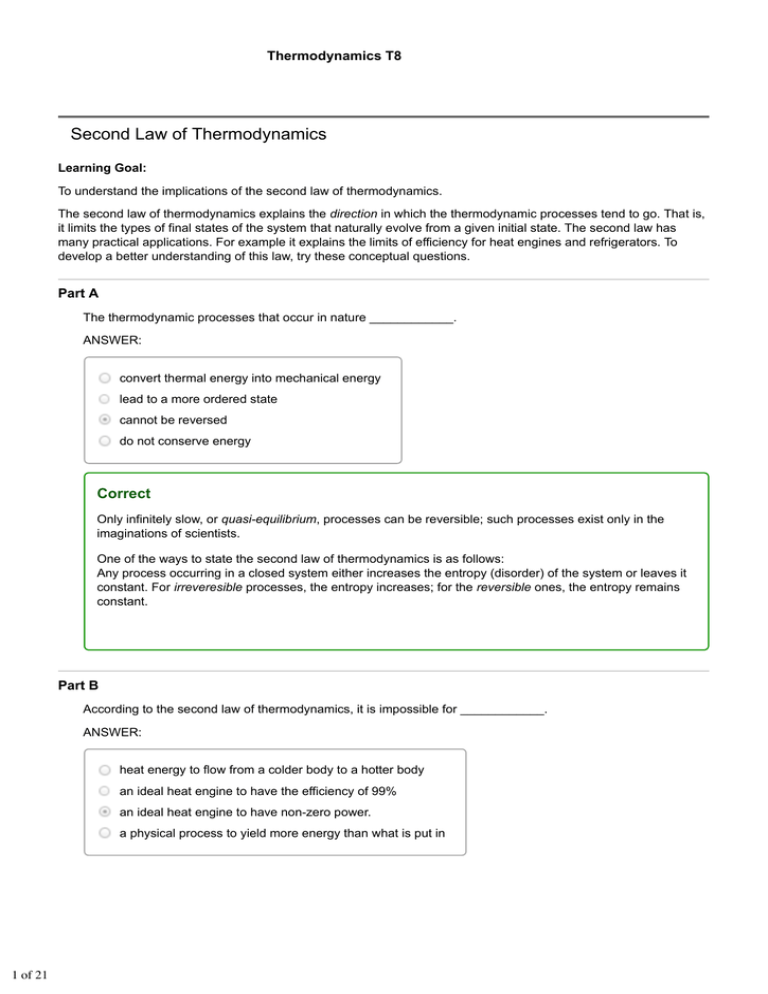

This is how the refrigeration process works, and an example can be seen in Figure 1. The second law of thermodynamics claims that it is impossible for heat to spontaneously flow from a cold body to a hot body, but it can move in that way if some form of work is done. Everyday experience certainly supports this statement, but it is a deep physical concept limiting what's possible with energy. This is known as the Clausius statement, and explains why an ice cube will melt when placed in a bowl of hot water but ice will not form from water outside on a hot day. " Heat will always flow spontaneously from hotter substances to colder ones". Although the Carnot efficiency can never be reached in reality, it is useful to compare to when looking at thermal efficiency of an engine.įor a more detailed study of this version of the second law please see the hyperphysics page on the second law: heat engines.Īlso known as the "Clausius statement", this is fundamental to how a refrigeration system works: Using an analysis of heat and work on an ideal engine, the maximum amount of work that can be achieved by a thermodynamic exchange between two specific temperatures is given by the Carnot efficiency. Waste heat is necessary for all engines, and the amount of work that is done by the input of heat gives the thermal efficiency of a system. This statement is important to understand in terms of practicality of heat engines.

Figure 2: It is impossible for the thermal efficiency of an engine to be 100%, where all of the heat from the hot body would be transferred to useful work.


 0 kommentar(er)
0 kommentar(er)
